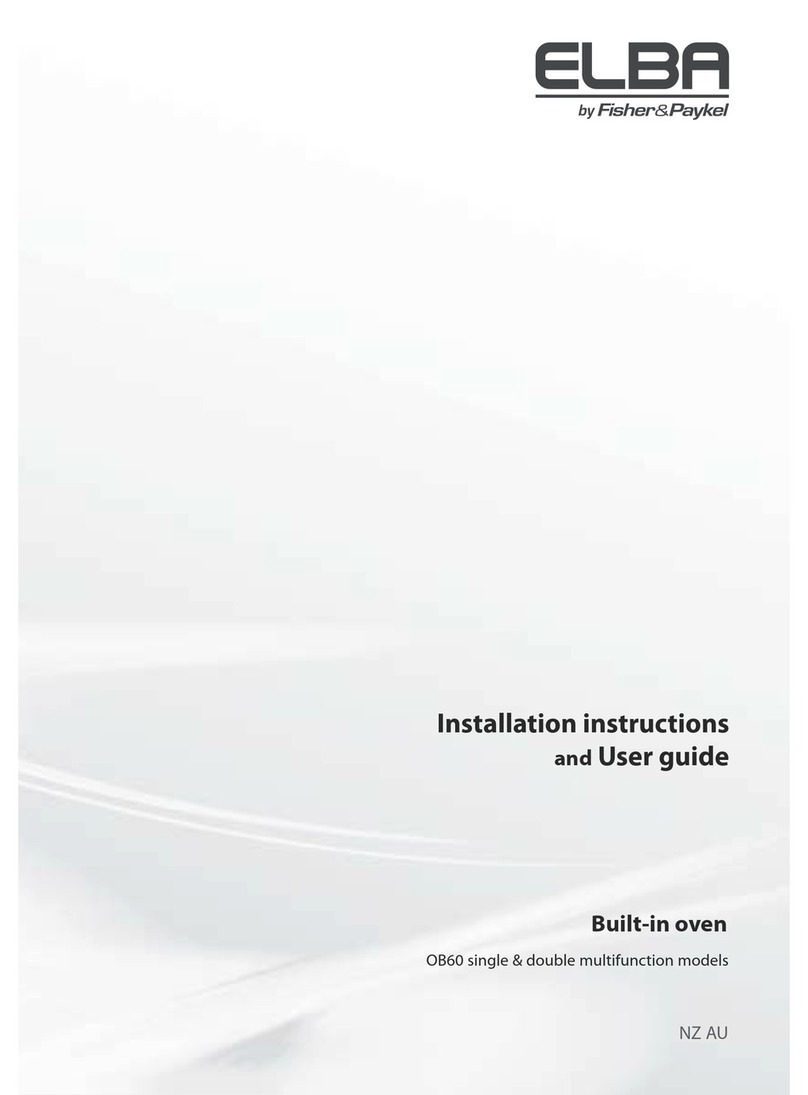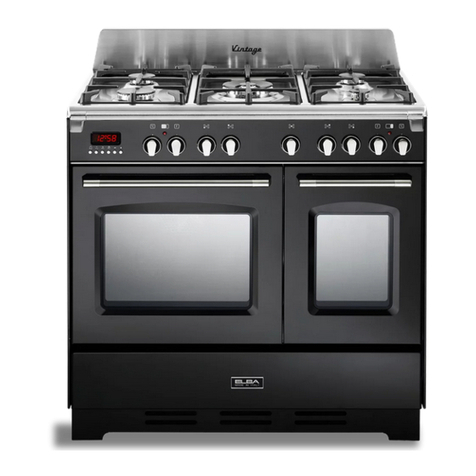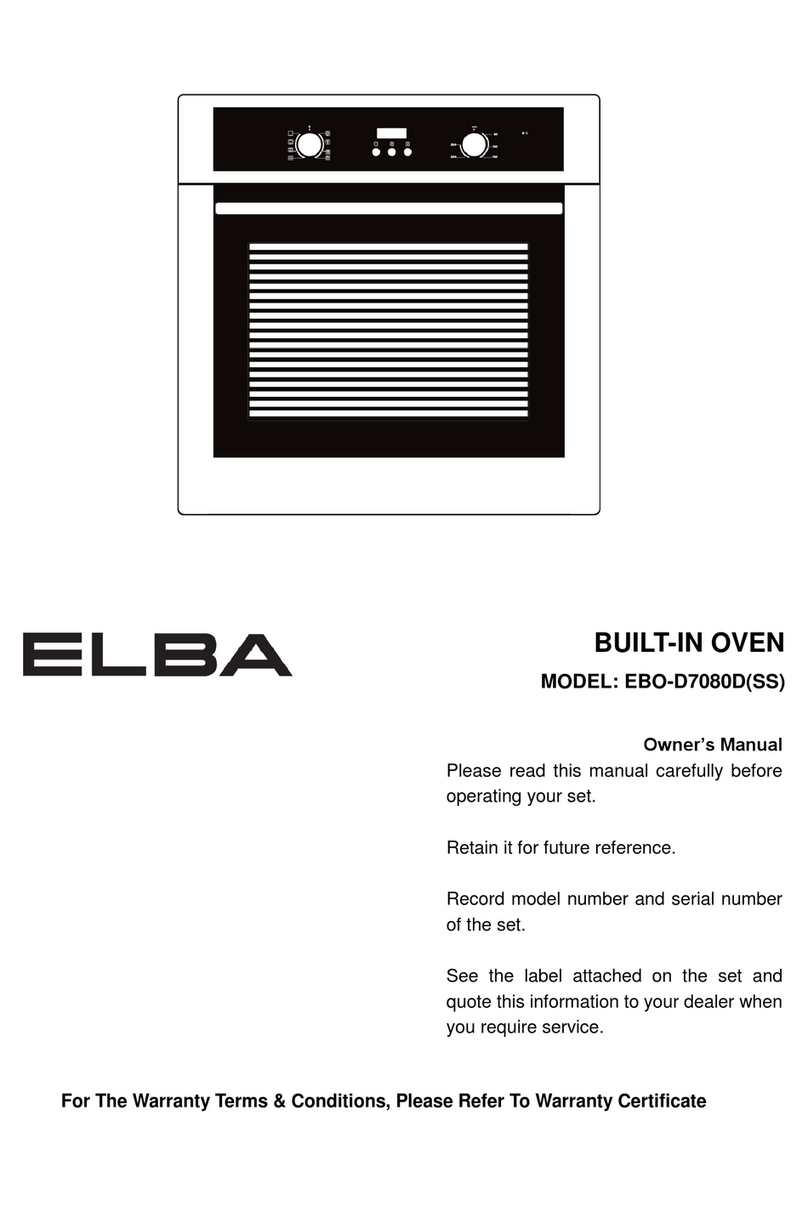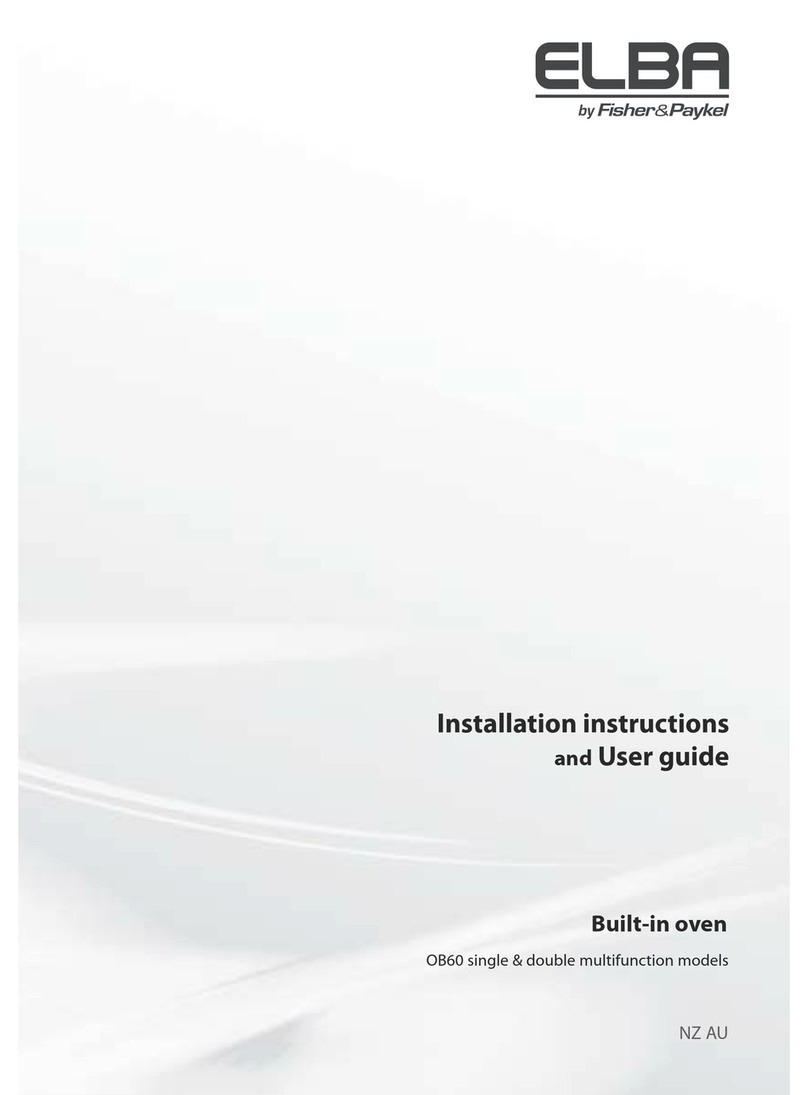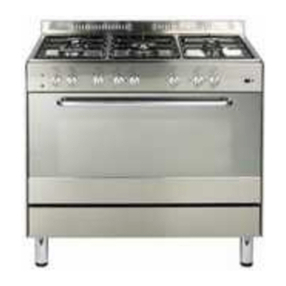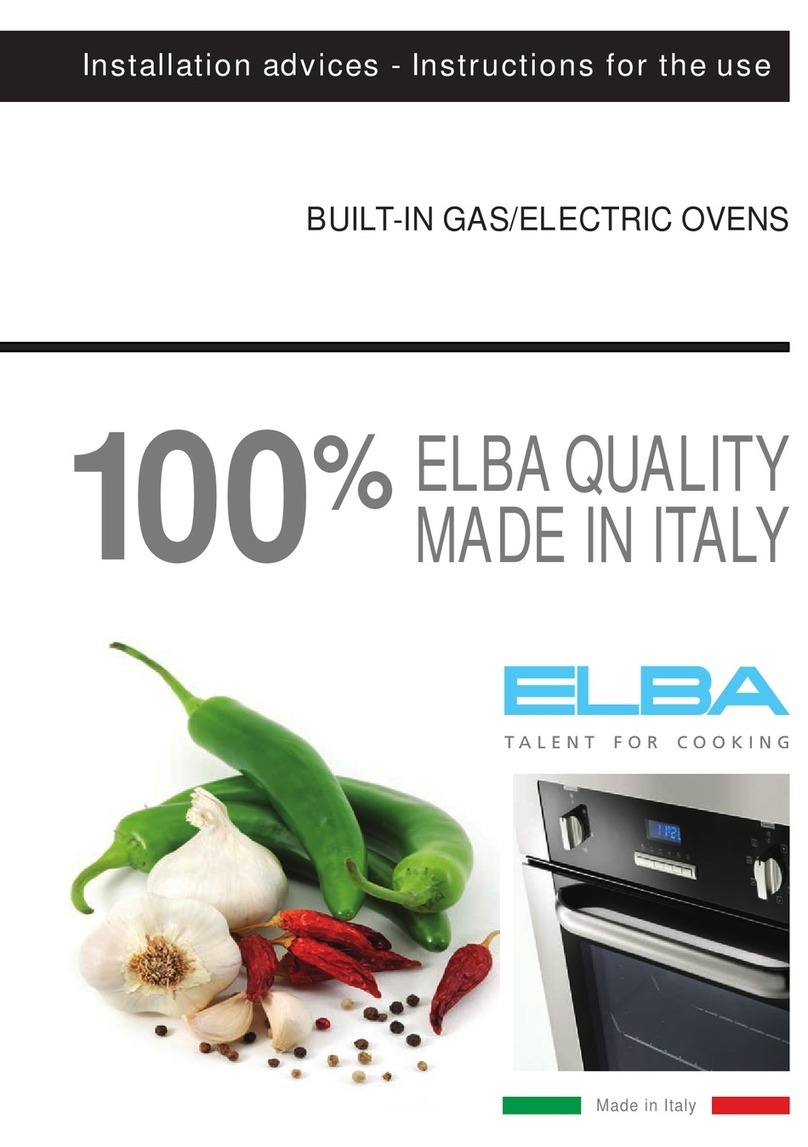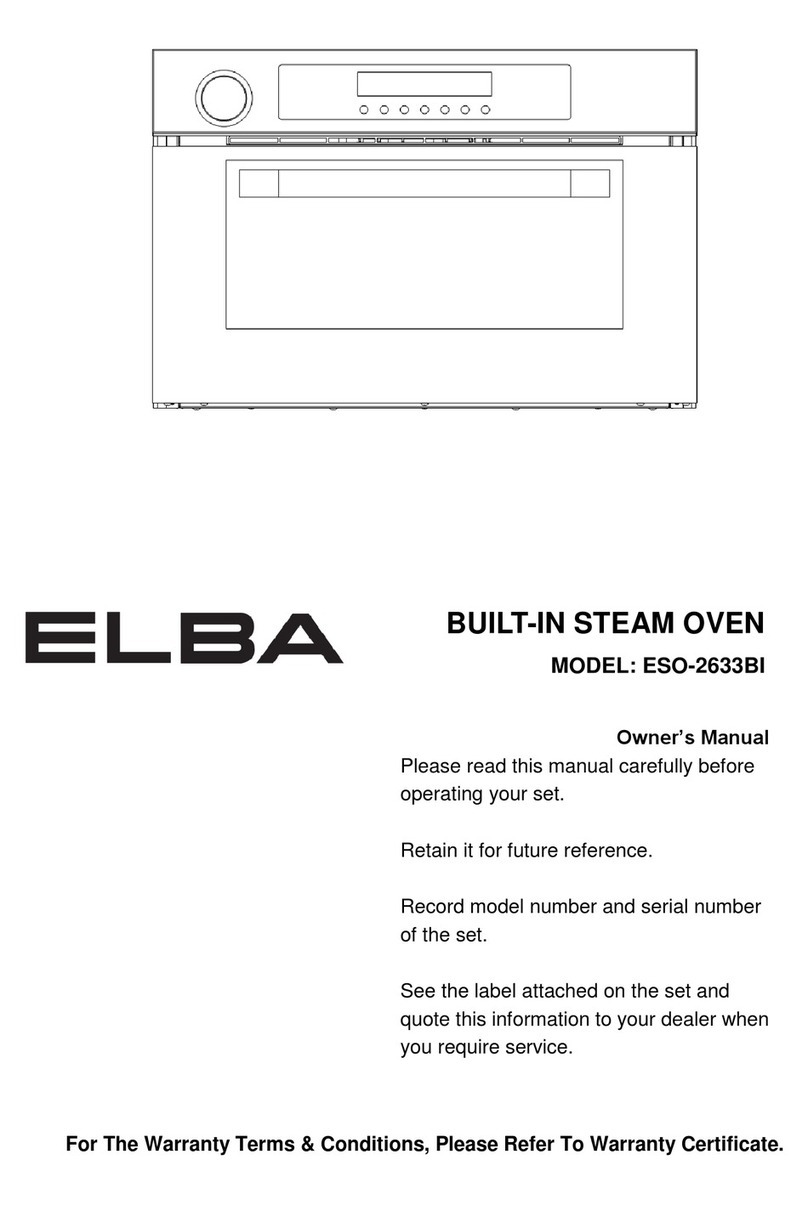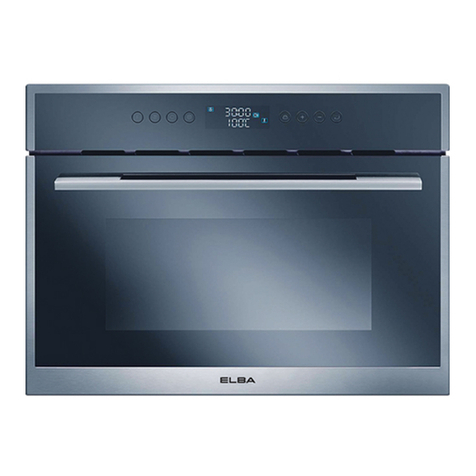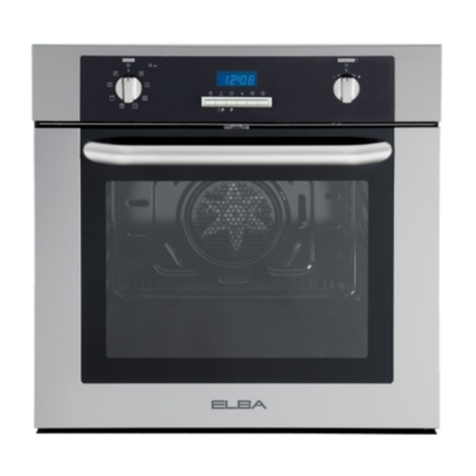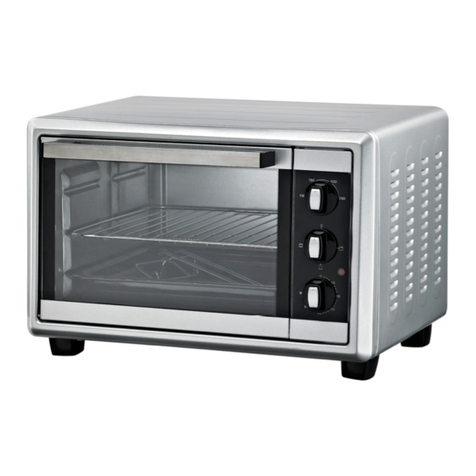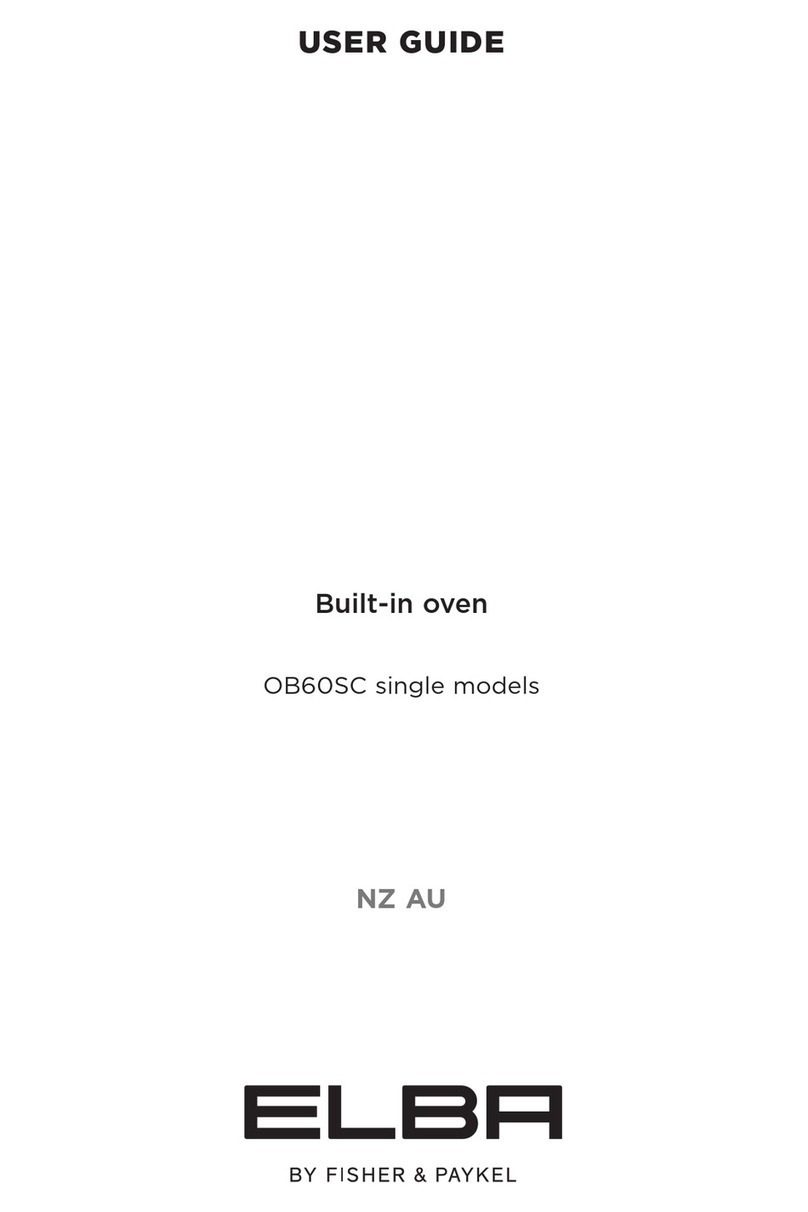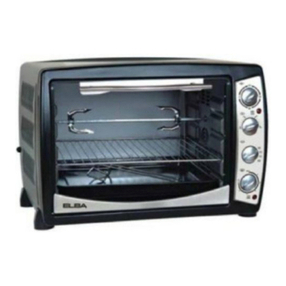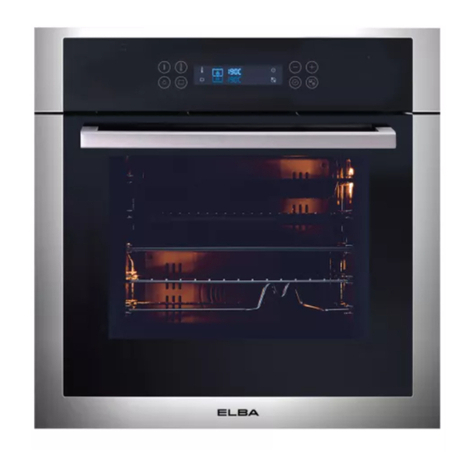10
UPPER HEATING ELEMENT
Only the upper element is switched on.
Heat is distributed by natural convection.
The thermostat can be set between
50°C and the maximum position with the
thermostat knob.
Recommended for:
This mode is particularly suitable to
complete cooking of dishes that require
higher temperature at the top.
GRILLING
The infrared grill element at the top of the
oven and the rotisserie come on.
The heat is dispersed by radiation.
Use with the oven door closed and the
temperature must be regulated between
50°C and 225°C maximum with the
thermostat knob.
For cooking hints, see the chapter “USE
OF THE GRILL”.
For cooking with the rotisserie, see the
chapter “USING THE ROTISSERIE”.
Always grill with the oven door closed.
Recommended for:
Intense grilling, browning, cooking au gratin
and toasting, cooking with the rotisserie, etc.
VENTILATED GRILL
COOKING
The infra-red grill and the fan are on. The
heat is mainly diffused by radiation and the
fan then distributes it throughout the oven.
Use with the oven door closed and the
temperature must be regulated between
50°C and 225°C maximum with the
thermostat knob.
It is necessary to preheat the oven for
about 5 minutes.
For correct use see chapter “GRILLING
AND AU GRATIN”.
Always grill with the oven door closed.
Recommended for:
For grill cooking when a fast outside
browning is necessary to keep the juices
in, i. e. veal steak, steak, hamburger, etc.
CONVECTION COOKING
WITH VENTILATION
The upper and lower heating elements and
the fan turn on.
The heat coming from the top and bottom
is diffused by forced convection.
The temperature must be regulated
between 50°C and the maximum position
with the thermostat knob.
Recommended for:
For foods of large volume and quantity
which require the same internal and
external
degree of cooking; for ie: rolled roasts,
turkey, legs, cakes, etc.
FAN FORCED
The circular element and the fan are on.
The heat is diffused by forced convection
and the temperature must be regulated
between 50°C and the maximum position
with the thermostat knob.
It is not necessary to preheat the oven.
Recommended for:
For foods that must be well done on the
outside and tender or rare on the inside,
i.e. lasagna, lamb, roast beef, whole sh,
etc.
DEFROSTING FROZEN
FOODS
Only the oven fan is on.
To be used with the thermostat knob on “0”
because the other positions have no effect.
The defrosting is done by simple ventilation
without heat.
Recommended for:
To rapidly defrost frozen foods; 1 kilogram
requires about one hour.
The defrosting times vary according to the
quantity and type of foods to be defrosted.
